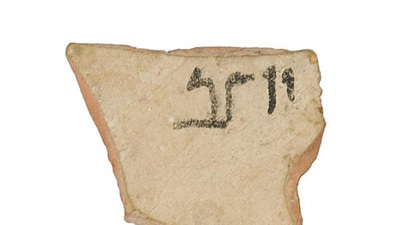In the last essay we discussed the uniqueness of the Talmud, and how its deliberate chaos is meant to show that Halacha can be understood only in its constant intermingling with Aggadah, the non-legal aspect of Judaism. It is this intermingling that is the true music of Judaism, and greatly influences halachic decision making.
The Torah As Aggadah
We see this same mix in the Torah itself. It too is a rare combination of legal content and stories. Like the Talmud, its content is chaotic but clearly deliberate, creating a headache for all the great commentators who seek to find some consistency behind it.
Indeed, much of the Torah is Aggadah. Whether its stories are allegorical or really happened (there is much discussion about that in the commentaries), it are these stories that make up the bulk of the Five Books of Moses. There are stories of the Avot and Imahot (the patriarchs) and stories of the slavery in Egypt, the Exodus, and the splitting the reed sea. There are narratives surrounding the circumstances under which the Torah was revealed, the incident with the Golden Calf, and the 40 year-long journey through the desert, during which the people of Israel constantly rebelled against God and Moshe.
All these stories are necessary to ensure that the Law is always seen through the lens of the biblical narratives.
And while the narratives in the Torah are very carefully studied, analyzed, and discussed, this is too often not the case with the Aggadah in the Talmud, despite the fact that all halachic debates are interwoven with Aggadic background.
It is therefore incomprehensible that the most voluminous part of the (Babylonian) Talmud – the Aggadah – is more or less ignored in many influential yeshivot.
Put differently, the prophetic voice of Judaism that represents the Heilsgeschichte – the redemptive history of Judaism, its meaning and its universal mission – is neglected and even dismissed.
This has led to a one-dimensional Judaism, which obviously cannot satisfy our most important need: our want for meaning.
We have gone on a hunger strike in the prison of our minds, starving for meaning.
It is thus not surprising that we find a great amount of dissatisfaction with Judaism in some orthodox and other circles that now, with the COVID-19 pandemic epidemy, has surfaced in a most serious manner. This has led to major – sometimes dangerous – problems, such as the refusal to adhere to governmental regulations, and even violence.
The Need For Existential Narrative
In times of danger, when we are confronted with death as never before, the search of meaning becomes overwhelming. When this need remains unfulfilled, it can lead to domestic violence, unrest, and even riots. People cannot deal with a constant lockdown and restriction on their movement if they do not see a higher meaning in it, whether real or imaginary.
This is true not only of the Jewish world. Many non-Jews have also been thrown into existential loneliness, giving rise to a feeling of helplines, panic, and unrest. We see the result in such unfortunate incidents as riots, and even the recent attack on the US Capitol in Washington DC. Such incidents all come down to the failure of traditional communities to provide meaning in today’s world. People turn to alternative sources, such as conspiracy theories.
It is thus important to remember that the rejection of Aggadah is not just a Jewish problem. It has become a universal problem. It is the rejection of our fundamental need: To understand the meaning of life and live accordingly. We need profound and life assuring stories which carry a message which is redemptive, reminding us that life is much more than satisfying our physical needs but a grandiose opportunity to become greater spiritual beings and “becomers”, surpassing the finality of somatic living. Many people are so busy with “making a living” that they neglect to live!
Without a way to make sense of life, and progressing as conscious beings, we succumb to psychological/mental regress. And, paradoxically, this is at a time where the world of science and technology makes progress as never before. This causes an enormous – and dangerous – gap between our accomplishments and our being.
So What’s The Solution?
One of the many things that must happen to escape this impasse is to translate the world of Aggadah, and its prophetical nature, into a modern language, so that its message is easier to understand. This message can then become a major part of both Jewish and non-Jewish education.
Instead of giving so much attention to non-Aggadic Talmud study, Halacha and its demands, finances – and even science and technology – we need to re-introduce the world of Aggadic thinking and its profound message. Not just to study it but to experience it.
People do not need to get what they want, but they need learn what they should want.
Questions like what must I do to be happy are somehow the wrong questions. This is because they relate to ends and not to means. It is “being”- or even better, “becoming” – that stands at the center of our happiness. It is the road that is important, not the destination.
Once we have translated the Aggadah as found in the sources of Judaism into modern terminology, we can share it with the non-Jewish world. But the truth is that the non-Jewish world has its own sages. While they speak in “non-Jewish” terms, with which we may not always agree, they did produce such people as Master Eckhart, Johann Wolfgang von Goethe, E.F. Shumacher, Albert Schweitzer, Alex de Tocqueville, Alasdair MacIntyre and many others who dealt with these very issues.
It is when Jews and non-Jews rediscover these important messages of the sages and the great non-Jewish thinkers, realizing that to really live is an art which few people have conquered but which is essential to our happiness. Only then the world will be able to slowly heal itself.
Spinoza taught us: All things excellent are as difficult as they are rare. (The Ethics, last chapter, end.)
And it is only when human beings become aware that they are “rare” that they can meet their meaning.
With thanks to Yael Shahar for her editorial and informative comments.
If you find Rabbi Cardozo’s articles of value, please consider supporting the Cardozo Academy. Go to: www.cardozoacademy.org and click on Donate tab.
Dear Friends,
Every week I receive hundreds of emails, as well as a host of important observations on my essays, via our website, Facebook, newspaper blogs, and other media outlets. It is therefore completely impossible for me to respond – for which I apologize – but please be assured that I read every comment, which I deeply appreciate and from which I learn so much. Only in exceptional cases will I respond in a subsequent essay. My office staff will try to be more prompt in posting these remarks on our website.
Thank you very much for taking the time to share your comments with me, as well as with your fellow readers. I hope you will continue to do so.
Nathan Lopes Cardozo



